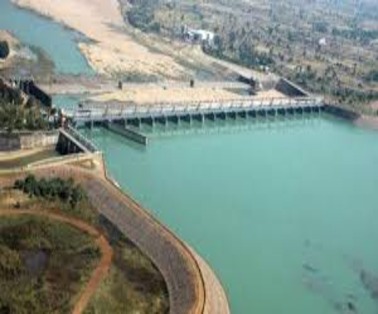The Archaeological Survey of India (ASI) has initiated the delisting of 18 centrally protected monuments, concluding that they no longer hold national importance. This decision is a major development in India’s heritage conservation landscape and raises significant concerns about how such monuments are preserved and remembered.
Key Points
- These 18 monuments are part of an earlier list of monuments that the ASI had said were “untraceable”.
- Among the monuments that face delisting now are a medieval highway milestone recorded as Kos Minar No.13 at Mujessar village in Haryana, Barakhamba Cemetery in Delhi, Gunner Burkill’s tomb in Jhansi district, a cemetery at Gaughat in Lucknow, and the Telia Nala Buddhist ruins in Varanasi.
- The precise location of these monuments, or their current physical state, is not known.
What Does “Delisting” by the ASI Mean?
- Delisting of a monument effectively means it will no longer be conserved, protected, and maintained by the ASI.
- Under The Ancient Monuments and Archaeological Sites and Remains Act, 1958 (AMASR Act), any kind of construction-related activity is not allowed around a protected site.
- Once the monument is delisted, activities related to construction and urbanisation in the area can be carried out in a regular manner.
- The AMASR Act, 1958 provides legal protection to monuments declared to be of national importance.
- Delisting a monument means it will no longer have this legal protection and could be subject to neglect or damage.
Legal Framework Behind the Delisting
- Section 35 of the AMASR Act says that “If the Central Government is of opinion that any ancient and historical monument or archaeological site and remains declared to be of national importance…has ceased to be of national importance, it may, by notification in the Official Gazette, declare that the ancient and historical monument or archaeological site and remains, as the case may be, has ceased to be of national importance for the purposes of [the AMASR] Act.
- The gazette notification for the 18 monuments in question was issued on March 8. There is a two-month window for the public to send in “objections or suggestions”.
- The list of protected monuments can grow longer or shorter with new listings and delistings.
- ASI currently has 3,693 monuments under its purview, which will fall to 3,675 once the current delisting exercise is completed
- This is the first such large-scale delisting exercise in several decades.
What Are “Untraceable” Monuments?
- The AMASR Act protects monuments and sites that are more than 100 years old, including temples, cemeteries, inscriptions, tombs, forts, palaces, step-wells, rock-cut caves
- These sites are scattered across the length and breadth of the country and, over the decades, some, especially the smaller or lesser known ones, have been lost to activities such as urbanisation, encroachments, the construction of dams and reservoirs, or sheer neglect, which has resulted in their falling apart.
- In some cases, there is no surviving public memory of these monuments, making it difficult to ascertain their physical location.
- When the ASI declares a monument as “untraceable,” it means that the monument is no longer physically locatable or identifiable.
- Despite the AMASR Act’s mandate for the ASI to regularly inspect and conserve protected monuments, the effectiveness of these efforts has been inconsistent.
About Archaeological Survey of India (ASI)
- The Archaeological Survey of India, or ASI, is an affiliated agency of the Government of India’s Ministry of Culture.
- It is responsible for archaeological research and conservation, as well as the protection and preservation of historic monuments and archaeological sites around the country.
- The laws of the Ancient Monuments and Archaeological Sites and Remains Act (AMASR Act) of 1958 govern all archaeological activity in the nation.
- The Antiquities and Art Treasure Act of 1972 is also governed by it.
- It was created in 1861 by Alexander Cunningham, a British Army engineer with a particular interest in Indian archaeology.
- Alexander Cunnigham has been dubbed the “Father of Indian Archaeology.”
- Archaeological activities began considerably earlier, in the 18th century, when Sir William Jones and a group of antiquarians founded the Asiatic Society in 1784.
- Following independence, the AMASR Act of 1958 established ASI as a statutory entity.
- The ASI headquarters is located in New Delhi and is led by a Director-General.
- ASI protects and preserves over 3500 protected monuments and archaeological sites of national importance.
Core Functions of the ASI
- All the archaeological study and excavation operations in India are carried out and regulated by the ASI.
- It also protects and maintains historical sites and monuments.
- Protected monuments, archaeological sites, and national remnants are maintained, conserved, and preserved.
- It works to keep monuments and antiquarian relics safe from chemical attacks.
- It conducts monument architectural surveys.
- It carries out epigraphical and numismatic research.
- It establishes on-site museums.
- It provides archaeological education.
- It publishes archaeology-related stuff.
- It also organizes archaeological digs outside of India.
- Horticultural activities are carried out at and around archaeological sites.
- It oversees the Antiquities and Art Treasures Act of 1972, as well as the AMASR Act.
Conclusion
The delisting of 18 monuments by the Archaeological Survey of India reflects a changing perspective on what constitutes national importance. While practical in some contexts, such actions also underline the urgent need for robust systems to document, protect, and preserve India’s vast and diverse heritage.
As the ASI continues to evolve its role, public awareness and participation in heritage conservation remain more crucial than ever.
To Download Monthly Current Affairs PDF Click here
Click here to get a free demo
Discover all about CLAT Exam



